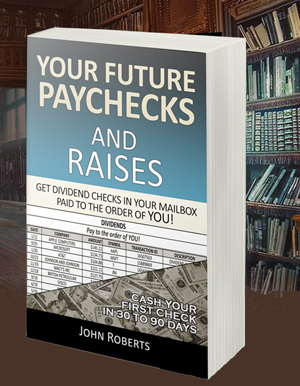Silver For Survival And The Y2K Incident
Some people buy silver as a protection against a serious breakdown in the economy.
While I take a moderate stand on this, there is a whole range of survivalist attitudes out there ranging from putting away a certain amount of emergency stores all the way through people running weekend, end of the world exercises dressed in camouflage military uniforms, weapons, target practice, and enormous stores of food cached away in hidden cellars on their multi-acre property.
I even see there is a television series on survivalists now.
I‘m no survivalist to this degree, but do think it prudent to have some modest amount of provisions available in case there is a multi-day disruption in the economy. This is just common sense. For example, if you live in the in Midwest, or further north, a large snow and ice storm can cause you to lose power and not get out of your house for a couple of days.
And there could be disruptions longer than this. We’ve been lucky and dodged most of these so far. But I recall one, just twelve years ago that had me worried. I saw it coming, as did many other people.
Do you remember the Y2K incident? This was the doom and gloom concern that on January 1, 2000, all the computers would fail and civilization would come to a halt. The reasoning was that most software programming used two digit years instead of four digit years, i.e. 1999 was 99 and 2000 would become 00, thus causing the software to fail to run properly. Do you think all of that was a hoax, as many of the newscasters and others say today?
I assure you it was no hoax.
I was a Senior Computer Programmer in the ‘70’s and helped create that problem with two digit year programming. Indeed, we all used to joke about the fact we didn’t want to be around in the year 2000 when dates went to 00. By the way, there was a solid technical reason why we had to do this. There just wasn’t enough computer storage back then. Programmers that used four digit years would have probably been fired because their programs would run out of memory and not run.
In any event, the joke turned out to be on me. Because by the time we were heading into the millennium, I was managing the corporate IT department for the same large Fortune 500 Corporation. (Note: Actually, a millennium is a thousand year period, but this is how people referred to it).
I will tell you that we spent two years before the millennium using virtually all of our time reprogramming and testing over 1000 computer programs, which would have failed had we not done so. We were so focused and concerned; we even told the CEO we could not program any of his new report requests during this time. And I assure you he was a rather insistent fellow.
Corporations do not spend this kind of time and money for no reason. The Y2K problem was not a hoax. It was avoided by this kind of effort in IT departments around the world. And as usual, the media has their history wrong.
I distinctly remember standing in a long line at the bank that Friday afternoon on December 31, 1999. There were an unusual number of people in the bank. And it was unusually quiet. Everyone was doing just what I was doing. They were drawing out large amounts of cash, somewhat furtively, to survive on in case the banking systems and the economy ground to a halt the next day.
I had many thoughts going through my head. Had we covered all of the Y2K issues? How were the systems going to work tomorrow? How well was I prepared at home if things went bad? Little stuff like that.
The teller looked at me with a strange look on her face. They all knew what we were doing. And I suspect they didn’t know whether to be worried, or if this was some kind of mass hysteria they were watching. Interestingly, Alan Greenspan, the Chairman of the Federal Reserve, had taken it seriously and loaded all of the banks up with large cash reserves in anticipation of this. I think it is no coincidence that he had been a computer programmer in the past for a brief time. I think Alan got the seriousness of the event.
So what does this have to do with silver, you may ask? Well, just prior to the millennium, many concerned people bought bags of silver coins. Like pre-1965 dimes, and quarters and half dollars. The ones we discussed in an earlier post. The ones called junk silver.
But no one was thinking of them as junk on December 31, 1999. Indeed, so many people had bought them that the premium had gone up by 50%.
Then by January 3, 2000, when it looked like things were working, they started selling. They sold so much that by the end of the year; the bags were selling for less than the value of the silver content.
And eventually, many were melted down and turned into silver bullion. That’s why today there is more of a scarcity of junk silver coins.
So people take silver seriously when the chips are down. And why not. Silver has been used as money for thousands of years.
And aside from being a good long term investment to add to your portfolio, silver can act as a hedge against serious economic trouble in the economy.
And there is possibly trouble ahead now where silver will be useful. It concerns the national debts of countries around the world and is the subject of our next post.
To your health and prosperity – John



